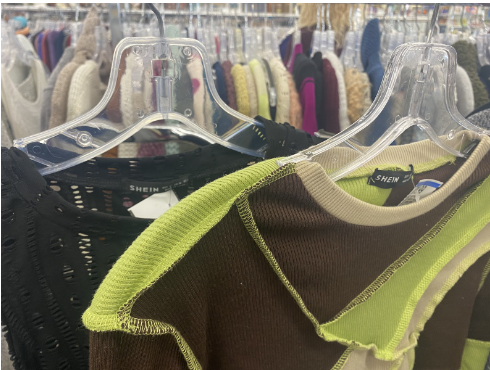The Environmental Side Effects of Fast Fashion
Fast fashion is a pretty modern affair that started in the 90s when brands and stores started to make cheaper, more trendy, and poorly made clothing that were only intended to last just as long as the trend cycle. But over the years, this seemingly harmless way of selling clothing has become increasingly careless and has impacted our environment greatly.
Due to stay-at-home orders starting in March 2020, many shoppers resorted to online stores and moved to new brands like Shein. People fell in love with Shein because of their new trendy affordable clothes. But once their clothes became out-dated, a lot of the time they would just never be worn again, donated, or even get thrown away.
During Covid, Shein reached the height of its career. Founded in 2008, a brand once worth about $5 billion, today is worth over $100 billion. On its way to success, the brand gave up sustainable practices which cause irreversible damage to the environment. When these clothes go through thrift stores, the cycle just continues; people use the clothes but they are either donated back to the thrift stores or abandoned and thrown away, which leads to polluting our oceans and hurting marine life.
Every minute, about two full-sized garbage trucks of trash are dumped into the ocean, and the pieces of trash are eventually broken down into micro plastics and fibers, they become extremely harmful to not only the ocean, but the animals as well. If marine life or sea birds ingest these plastics and fibers it is very likely that a blockage will start to form in their gut causing unusual eating habits or activity and ultimately lead to a miserable death for the animal.
In America alone, over 11.3 million pounds of clothing ends up in landfills each year, only 15% of clothes are recycled or donated, leaving about 85% of all textiles in the landfills. The average consumer throws away about 81.5lbs of clothing, yearly. Textiles can take hundreds of years to decompose in landfills. Shein has become one the biggest contenders in the mass production of clothes ending up in landfills each year.
But the destruction doesn't end with killing the ocean and taking over landfills, brands like Shein also play a huge part in global warming. Shein ships internationally which by itself releases tons of greenhouse gasses into the atmosphere. With Shein being such an impactful company they contribute even further to global warming and the 1 billion metric tons of gas already being released from shipments every year.
Though Shein plays a huge part in the damage they’ve caused, they are not the only ones to blame. Social media platforms, celebrities, and TV shows also play a huge role in promoting consumerism and fast fashion. One prime example of celebrities pushing these trends is American singer-songwriter, Lana Del Ray, who wore an $18 Shein dress on the red carpet at the Variety Awards.
TikTok also helps to stimulate and push new trends on its extremely impressionable audience. Trends start at any given moment. A girl’s video can go viral and viewers comment, “Where’d you get your top?!”, and the creator replies, “Shein”, inspiring many others viewers to get the same top, sparking a new trend or micro trend. The rise of Shein has been heavily promoted by TikTok and instead of being talked down on, people are hyping it up for its affordable prices, making the brand seem better than it truly is without looking at the bigger picture.
Shein also regularly knocks off many designer products like bags and dresses which consumers adore. If a shopper sees a new designer item on television or social media but simply cannot afford it, they can find a dupe on Shein. Shoppers can continue to do this whenever they desire an up-charged article of clothing, which strongly helps the growth of Shein.
Not only does Shein make knock-off designer clothing, but they also steal many up and coming designers ideas. Many of these new designers turn to various social media platforms to bring awareness to this issue and put a stop to it.
Sadly, nothing has really been done to help stop this happening to small businesses. Frequently, those designers start to go under because Shein can offer cheaper prices.
Some solutions to help end these problems and to decrease the environmental toll of fast fashion would be to do some simple research when online shopping to see if the brand is sustainable and to buy more quality clothing.
The effects of fast fashions have become progressively worse over the years and will only worsen if companies aren’t held accountable and unsustainable practices continue.



